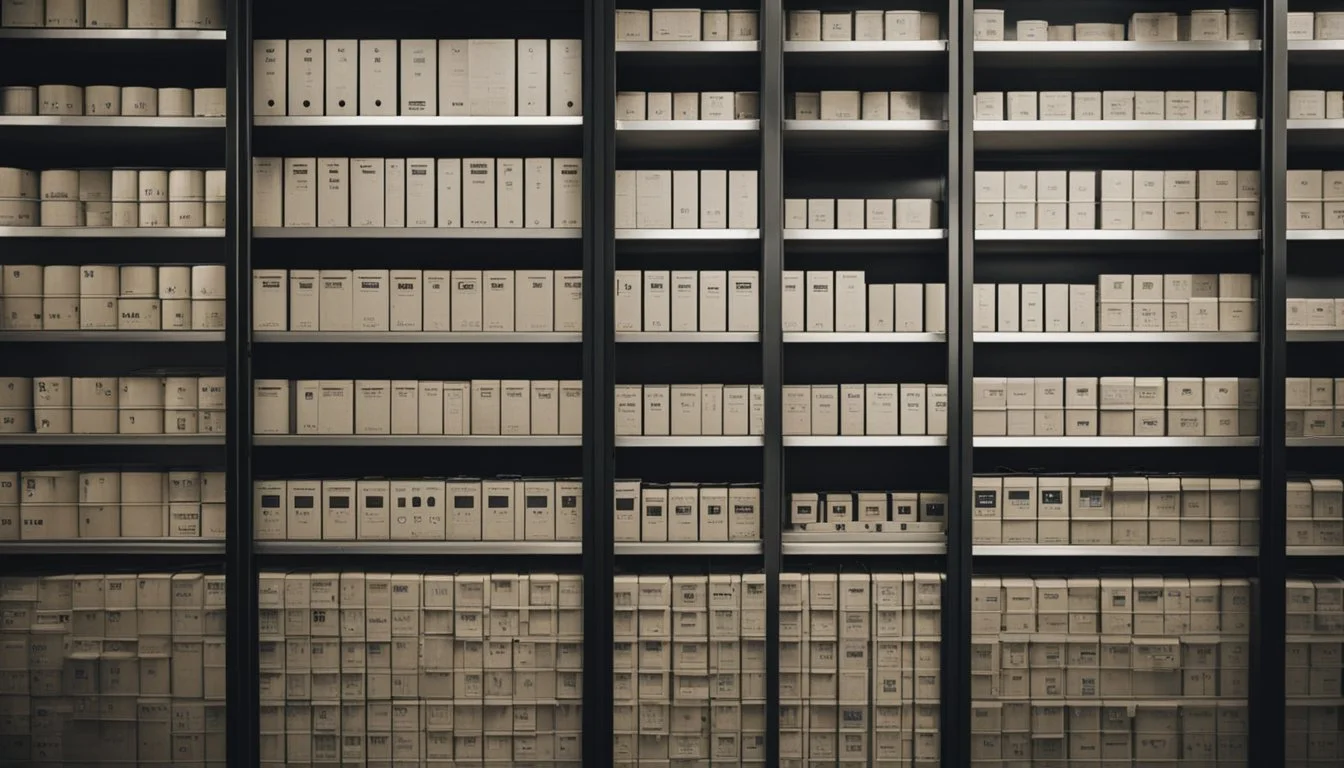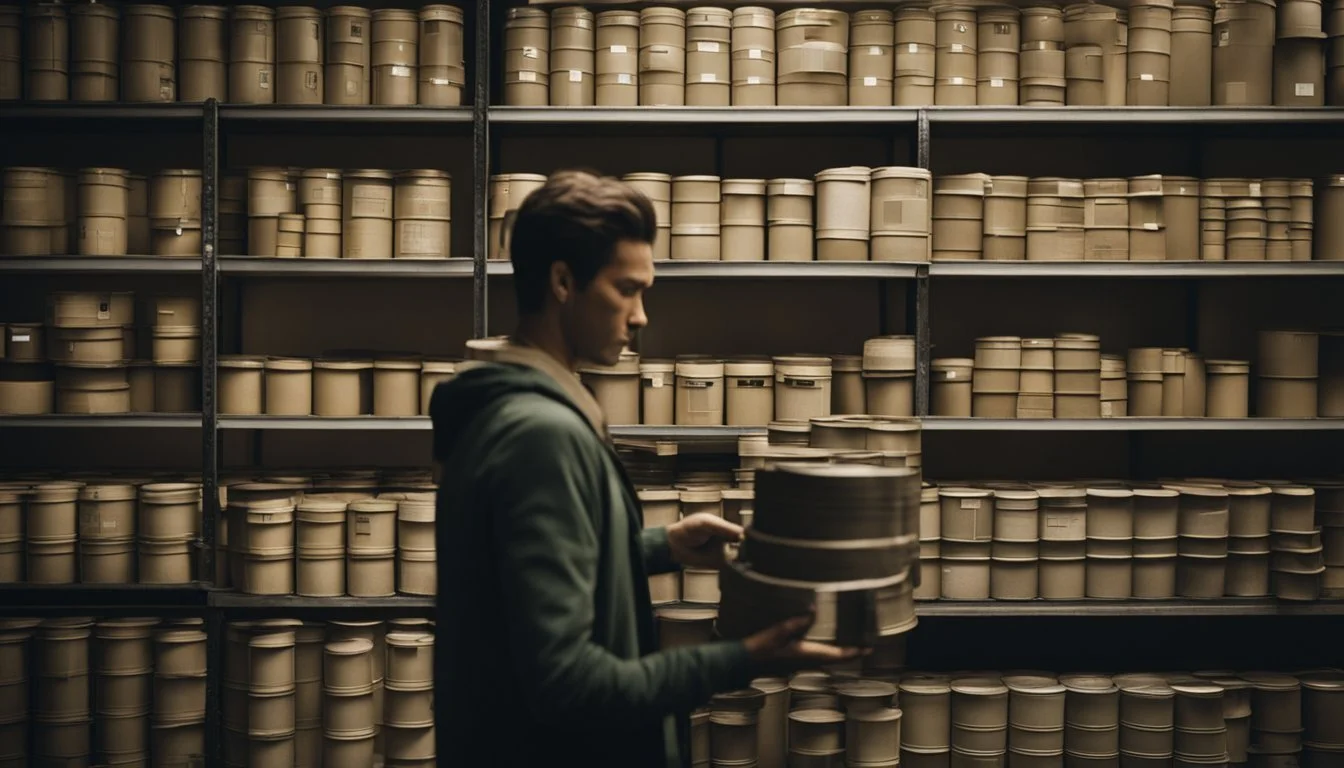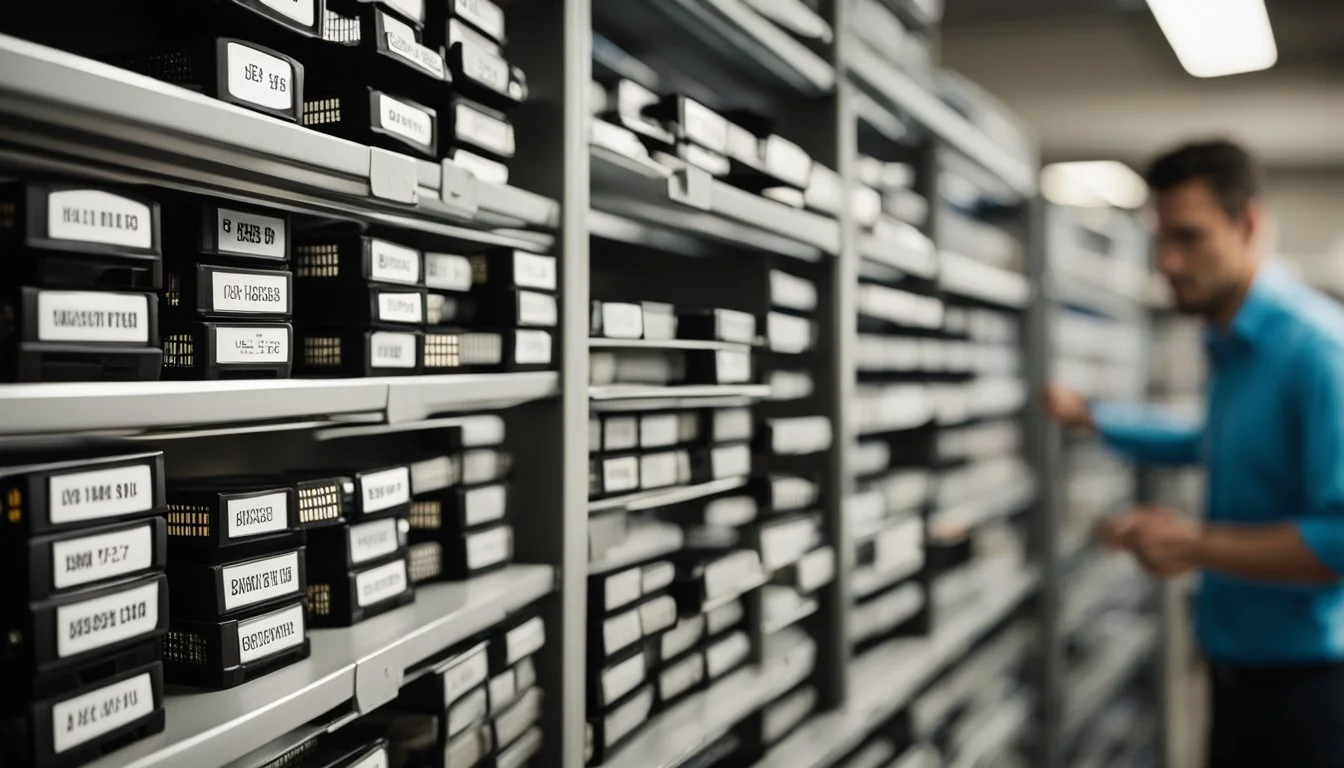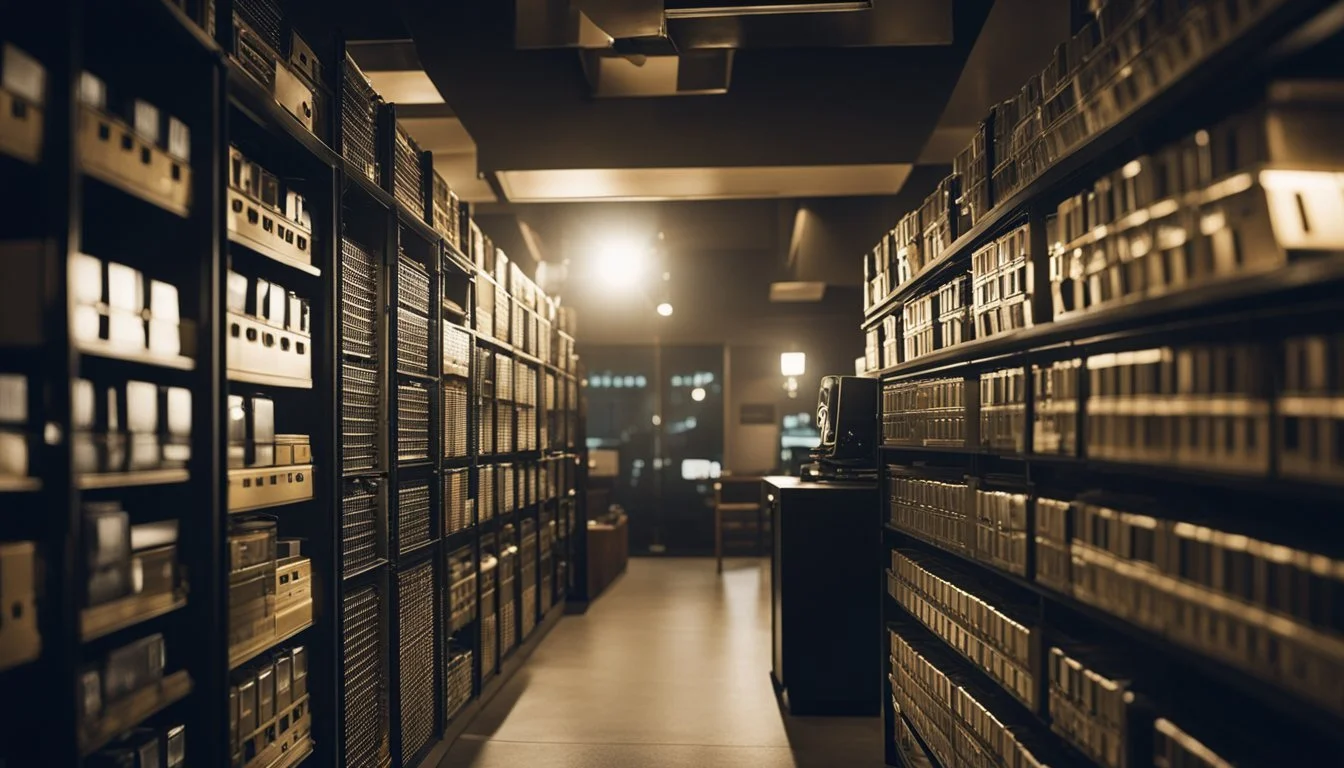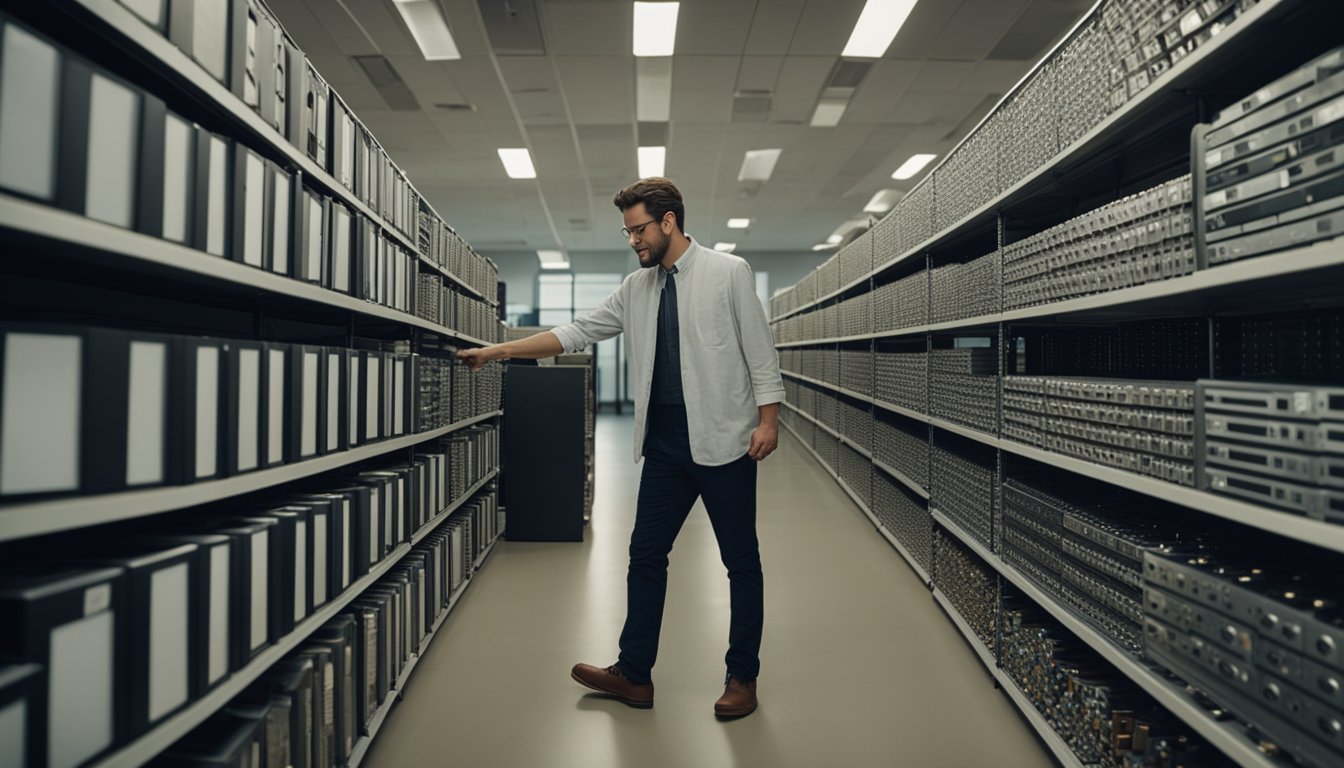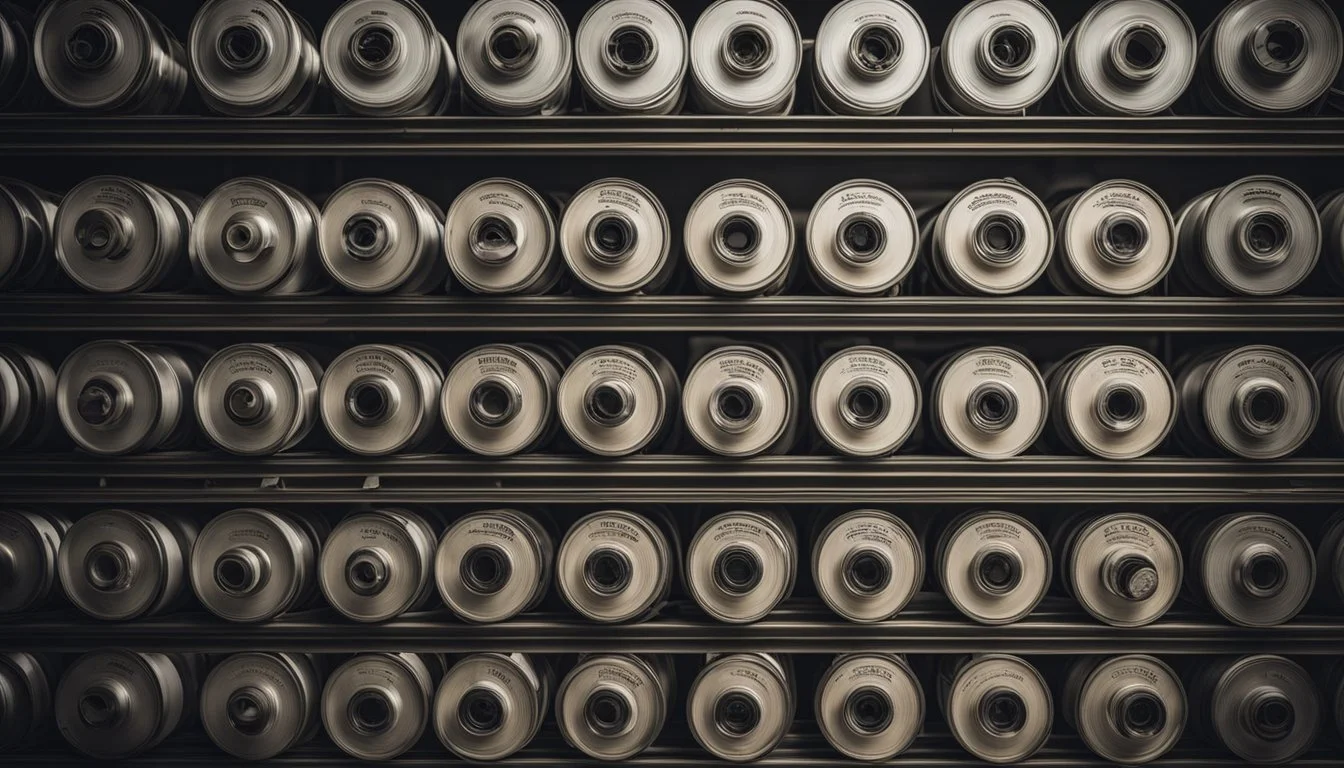Navigating the World of Film Archives and Stock Footage
A Comprehensive Guide
Navigating the world of film archives and stock footage can be a daunting task for filmmakers and production professionals, but it is an essential part of creating rich and authentic media content. From newsreels to personal home videos, archival footage provides a treasure trove of historical and contextual material that can enhance any project. Unlocking the potential of these archives is crucial for adding depth and credibility to documentaries, feature films, and other media productions.
Whether you're searching for rare vintage clips or high-definition digital content, understanding the various sources and how to access them will save precious time and resources. Institutions like the Sherman Grinberg Film Library, the world's oldest and largest privately held film archive, house extensive collections spanning over a century. Leveraging these archives gives filmmakers the ability to transport viewers to different eras and create compelling narratives based on authentic footage.
With a strategic approach to categorizing and selecting the right clips, filmmakers can effectively incorporate archival footage to support their storytelling. This not only enriches the narrative but also provides a factual backbone that resonates with audiences. By mastering the use of archives and stock footage, producers can elevate their projects significantly, creating a bridge between the past and the present.
Historical Context of Film Archives
Film archives have evolved significantly from humble origins, now serving as essential repositories of cultural and historical heritage. Preservation efforts ensure that these visual records remain accessible for future generations, highlighting their enduring importance.
Evolution of Film Archiving
Film archiving began in the early 20th century as cinema gained popularity. Initially, film studios and production companies stored reels due to their commercial value. Early efforts focused on maintaining the physical integrity of films to prevent decay and loss.
During the mid-20th century, significant strides were made. The establishment of institutions like the National Archives and the rise of technology transformed archiving practices. Introduction of digital formats and online databases enabled rapid growth in storage capabilities and accessibility.
By the 1970s, the National Archives’ film holdings expanded greatly, reflecting an increasing commitment to archival film preservation. This growth paralleled advancements in cataloging, making it easier for researchers to locate and utilize archived footage. Now, archives around the world house millions of reels, constantly updated to include recent historical visual materials.
Significance of Preservation
Preserving film archives is crucial for historical documentation, enabling societies to safeguard visual records of significant events, cultural practices, and societal changes. Archival footage serves as a primary source for historians, researchers, and filmmakers, providing authenticity and context to their work.
Authentic archival materials offer a more accurate reflection of the past than recreated scenes. They offer genuine insights into the era they depict, maintaining the original sound, visuals, and context. This preservation is vital for educational purposes, allowing current and future generations to witness unaltered historical moments.
Additionally, preserving these films helps prevent the degradation that comes with time and use. Advances in technology, such as digitization, have played a key role in ensuring these valuable resources remain intact and accessible.
Understanding Stock Footage
Stock footage serves as a valuable resource for filmmakers and content creators, offering pre-recorded video content that can deliver significant benefits and cut production costs.
Definition and Uses
Stock footage consists of video clips recorded for use in various media projects. This footage often includes diverse subjects like nature scenes, cityscapes, and historical events.
Filmmakers and content creators use stock footage to enhance their productions without needing to film additional content.
This cost-effective solution helps in filling gaps, adding context, or providing specific visuals that may be difficult to capture directly. For example, historical footage can add authenticity to documentaries, while cityscape clips can set an urban scene in a movie.
Types of Stock Footage
There are several types of stock footage:
Royalty-Free: Allows unlimited use after a one-time purchase.
Rights-Managed: Usage is restricted by factors like duration, geography, and audience size.
Editorial Use: Specifically for non-commercial purposes like news and documentaries.
Formats vary from high-definition clips to 16mm and 35mm film. Sources range from government archives to specialized libraries with extensive collections of vintage films, newsreels, and more. These various types offer filmmakers flexibility in meeting specific production needs.
Film Archives Operations
Film archives play a critical role in preserving and providing access to historical footage. Key aspects of their operations include acquisition, preservation, and digital archiving.
Acquisition and Cataloging
Film archives acquire materials through donations, purchases, or transfers from other organizations. Each piece undergoes a rigorous review to determine its historical value and authenticity.
Cataloging involves detailed documentation, ensuring items are accessible for research and use. Metadata, including dates, descriptions, and technical specifications, is meticulously recorded. This metadata helps users locate and identify relevant footage quickly and accurately.
Preservation and Restoration
Preservation involves maintaining the physical integrity of the film. This includes storing films in climate-controlled environments to prevent deterioration. Restoration processes repair and enhance damaged or degraded footage, often through manual cleaning, repairing tears, and color correction.
Proper preservation ensures the longevity of the film, while restoration efforts make historically significant footage viewable and usable once more.
Digital Archiving
Digital archiving converts physical film media into digital formats. This process involves high-resolution scanning and storage in robust digital databases. Digital archiving not only aids in preservation but also enhances accessibility, allowing users to search and retrieve footage easily via online platforms.
Digital archives must protect files against loss or corruption, often using redundant storage solutions and regular backups.
Accessing Film Archives
Accessing film archives involves understanding the distinctions between public and private collections, making appropriate research and viewing appointments, and navigating the complexities of copyrights and permissions.
Public vs. Private Holdings
Film archives are typically divided into public and private holdings. Public archives often include national libraries, government-run institutions, and publicly funded organizations. These archives generally offer free access to a wide range of historical footage.
Private archives, on the other hand, are controlled by commercial entities, private organizations, or individuals. Access to these collections may require membership, subscriptions, or even purchasing rights. The Historic Films Stock Footage Archive, for example, holds over 50,000 hours of footage, but access could be restricted based on usage and licensing agreements.
Type Characteristics Public Archives Free or low-cost access, supported by public funds Private Archives Restricted access, may require payment or membership
Research and Viewing Appointments
When accessing film archives, proper planning is essential. Public archives often allow online searches prior to visiting, making it easier to locate specific footage. Websites like Archive.org house millions of videos, including footage from the Prelinger Archives.
Private archives might necessitate booking research appointments. This could involve filling out specific forms and sometimes even outlining the purpose of your research. Some archives, like the Library Guides' Film Archives, offer searchable online databases to streamline the process.
To ensure a fruitful visit, one should:
Pre-search online directories
Schedule appointments in advance
Prepare a list of required materials
Copyrights and Permissions
Navigating copyright issues is crucial when accessing film archives. Public domain footage is freely accessible and usable, often found in public archives and specific collections like the Prelinger Archives.
Footage in private collections usually requires permissions and may involve licensing fees. It is important to contact the archive's administration to understand the terms of use.
For example, footage from ITN/Reuters Stock Footage Library typically demands compliance with licensing rules. Researchers should be aware of:
Copyright duration: Varies by archive and footage age
Usage rights: Different for educational vs commercial use
Legal agreements: Necessary for reproducing or distributing footage
Understanding these aspects ensures that usage remains legal and within specified guidelines.
This format provides clear information on how to access film archives, align with public and private distinctions, manage research and viewing appointments, and navigate copyright and permissions, enhancing the reader's understanding and approach to accessing film archives.
Utilizing Stock Footage
Stock footage offers filmmakers a valuable resource for enhancing their projects. Key considerations include the costs involved, integrating the footage creatively, and ensuring high-quality materials.
Licensing and Costs
Licensing agreements dictate how stock footage can be used. Filmmakers must understand the terms, which vary by provider. Some footage is free, especially in public domain archives like Archive.org. Others can be costly, particularly rare or high-definition clips.
Costs are typically based on duration, distribution scale, and exclusivity. Rights-managed footage generally incurs higher fees compared to royalty-free options, which offer broader usage rights for a single upfront payment. Ensuring clarity on these aspects is crucial for budget planning and legal compliance.
Creative Integration
Effectively integrating stock footage into a film requires thoughtful planning. Filmmakers should align the footage with the project's visual style and narrative. This can involve matching color grading, ensuring consistent pacing, and blending seamlessly with original content.
Strategic use of stock footage can illustrate historical contexts or depict locations that are otherwise inaccessible. It can also add depth and authenticity. Careful selection and editing help to maintain a cohesive and engaging viewer experience.
Quality Considerations
Quality varies widely among stock footage sources. Filmmakers should prioritize resolution, clarity, and compatibility with their projects. High-definition and 4K footage can be found in specialized collections, like those offered by Producer's Library.
Examining technical specs – bit rate, frame rate, and color profile – ensures that the chosen footage meets the production standards. Additionally, checking for artifacts or defects before finalizing a purchase can prevent issues during editing. High-quality stock footage is vital for maintaining the professional look of the final film.
Digital Platforms and Databases
Digital platforms and databases are essential tools for sourcing archival and stock footage. They offer comprehensive collections of historical and contemporary materials that are accessible and searchable online.
Online Archives and Libraries
Internet Archive hosts over 4.4 million videos, including the Prelinger Archives. Around 65% of these videos are in the public domain.
Shutterstock provides a range of stock videos. Offering packs and subscriptions, it is a prime choice for those with a flexible budget.
Periscope Film specializes in transferring motion picture films into high-quality digital formats. They utilize the advanced LaserGraphics ScanStation telecine platform.
Producers Library boasts a wide array of footage, from 16mm and 35mm films to high-definition 4K clips and vintage movie segments.
Film Archive Networks
Footage.net offers access to over 3,000 footage sources worldwide, as documented in Rick DeCroix's article "A History of Stock Footage."
Producers Library, with six decades of curation, showcases locations from around the globe, newsreels, and outtakes from TV and feature films.
These networks are critical for researchers and filmmakers seeking diverse and historically rich content.
Economic Aspects of Film Archives
Film archives play a crucial role in preserving cultural heritage, but they also involve significant economic considerations. Understanding these economic aspects is essential for maintaining such collections and making them accessible to the public.
Monetization and Funding
Monetization of film archives primarily involves licensing fees. Collectors, researchers, and filmmakers often pay to use footage housed in these archives. Licensing can be complex, with fees varying based on usage, duration, and exclusivity.
Funding for film archives typically comes from a combination of public and private sources. Governments may allocate budgets for preserving cultural heritage. Private entities, such as film studios and educational institutions, also contribute. Grants and donations are vital for many archives, enabling them to digitize, catalog, and preserve films.
Economic Value of Archival Footage
Archival footage holds significant economic value. Historical films offer unique insights and can be used in documentaries, educational materials, and media projects. This re-use not only generates revenue but also brings historical moments to a broader audience.
Moreover, digital archives enhance accessibility, reducing preservation costs and expanding the market for archival footage. Economic valuation studies, like those discussed in recent research, estimate how much people are willing to pay for access to these digital resources. Such studies highlight the financial benefits of investing in film archives, ensuring their continued existence and accessibility.
Technical Challenges in Film Archiving
Film archiving faces significant issues related to the obsolescence of formats and the conservation of physical media. These challenges are crucial for ensuring that historical footage remains accessible and intact for future generations.
Obsolescence of Formats
Digital technology evolves rapidly.
Older formats such as VHS, Betamax, and various film reels become difficult to access.
Key Points:
Hardware Availability: As legacy formats fade, the equipment needed to play them also diminishes.
Digital Migration: Transferring older media to contemporary digital formats is labor-intensive and costly.
Professional and institutional archives must allocate resources for continuous updates. They often grapple with proprietary formats, which complicate migration.
Conservation Issues
Physical film reels deteriorate over time, posing significant risks.
Highlight:
Environmental Factors: Temperature, humidity, and light exposure can damage film stock.
Chemical Degradation: Films are susceptible to issues like vinegar syndrome, where the acetate base deteriorates.
Maintaining a controlled environment can slow decay. Archivists employ various techniques, including refrigeration and specialized storage solutions, to extend the life of these valuable materials.
Emerging Trends in Archiving
The landscape of archiving is evolving with advancements in technology. Two major trends are the use of virtual reality and the integration of AI and machine learning.
Virtual Reality Archives
Virtual reality (VR) is revolutionizing the way archives are accessed and experienced. VR allows users to immerse themselves in historical events or locations, creating an interactive and engaging experience. This technology is particularly beneficial for educational institutions and museums.
VR can recreate environments, enabling users to virtually "walk through" archives. Such experiences provide a deeper understanding of historical contexts. Institutions are creating VR archives to preserve rare, fragile artifacts, and to make them accessible to a broader audience.
By providing an immersive experience, VR aids in better retention of information and offers a new way to explore historical content.
AI and Machine Learning in Archiving
AI and machine learning are transforming archival processes. These technologies streamline the identification, categorization, and retrieval of archival materials. Machine learning algorithms are used to automatically tag and classify vast amounts of data, making archives more accessible.
AI can also detect patterns and connections within data that may not be immediately apparent to humans. This capability is instrumental in uncovering new insights and making archival research more efficient.
Institutions are increasingly relying on AI to manage digital archives. It helps in maintaining the integrity of data, automating metadata entry, and enhancing search functionalities. These developments are making archives smarter and more user-friendly.
Ethical Considerations in Film Preservation
Ethical considerations are paramount in the field of film preservation. Film archivists aim to maintain the original integrity of the material while making it accessible for future generations.
A major ethical concern is authenticity. Archivists strive to retain the film's original features, including its color, texture, and frame composition. Any alteration should be minimal and well-documented.
Transparency is crucial. Restoration processes and methodologies used should be fully disclosed. This practice ensures the archival community can assess the fidelity and accuracy of the restored work.
Consent and Intellectual Rights must be respected. Permission from the original creators or their representatives is essential before undertaking significant restorations. Proper credit should also be maintained throughout all stages of preservation and restoration.
A balance between preservation and access is necessary. While preserving the film's physical and artistic integrity is vital, making it accessible for educational and cultural purposes should not be overlooked.
Use of Digital Tools brings its own set of ethical questions. Digital restoration can enhance a film but must be done cautiously to avoid misrepresenting the original work. Techniques and changes should be clearly listed, and no artistic liberties should be taken without proper justification.
In the context of obsolescence and material degradation, ethical considerations also encompass the carriers of the film. The instability of formats and materials should be carefully managed to safeguard the information without compromising the original essence.

